 |
[The Sun]
Viewed via visible light, the Sun appears to be a globe with a smooth and luminous surface. By contrast, X-rays show that it has a dynamic corona.
|
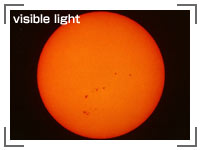 |
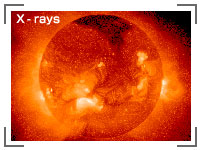 |
[The Virgo cluster]
Visible light allows us to spot galaxies as clear dots in the sky; X-rays show hot gas surrounding the galaxies. |
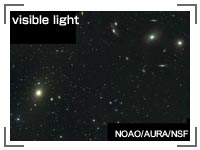 |
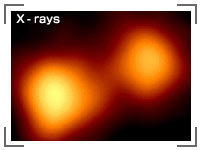 |
[Sirius]
Sirius A is a bright fixed star easily observed with visible light. The luminous star observed with X-rays is Sirius B, a white dwarf star. It is an extremely dense star, about the same size as the Earth but as heavy as the Sun. X-ray observation makes Sirius B appear to be more luminous because it is extremely hot. Sirius B is heated to a temperature of millions of degrees Celsius by the friction created when it sucks in gas emitted by Sirius A and accelerated in the process.
|
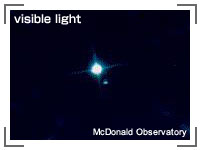 |
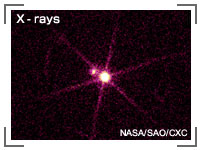 | <>< mce_serialized="2">
|



